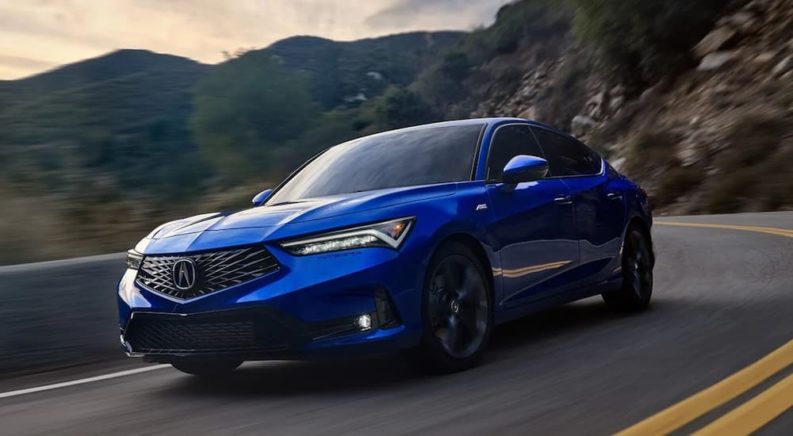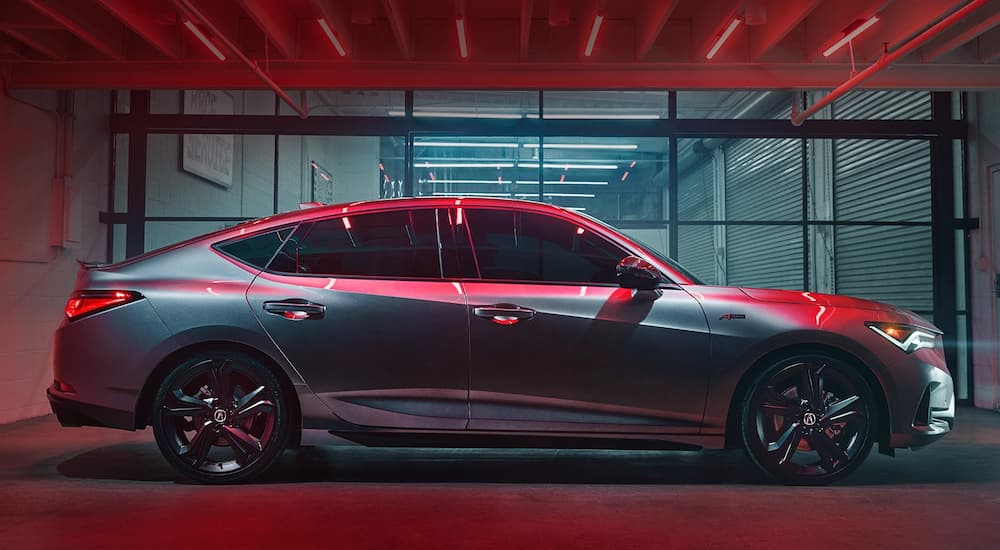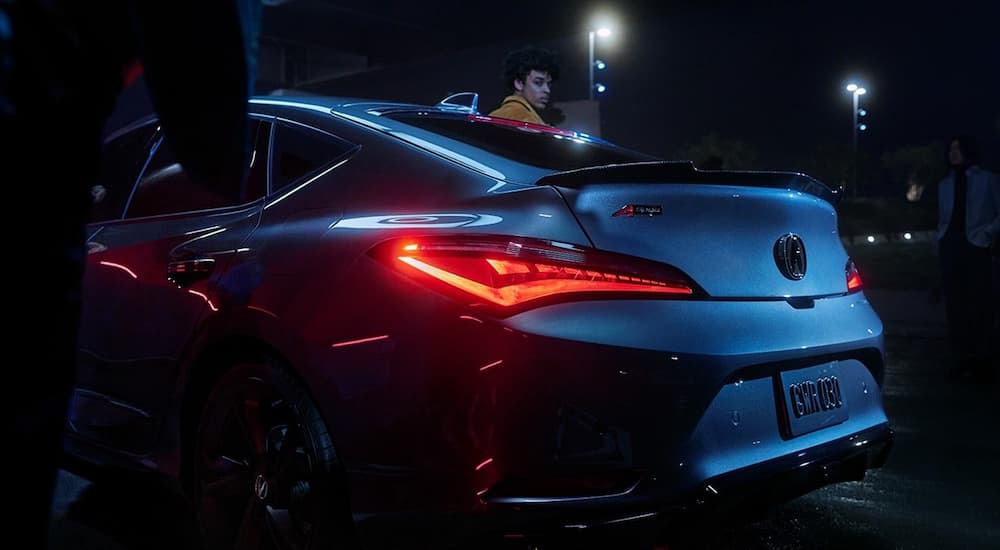We’ve written a little bit before about the power and significance of nostalgia—how the bittersweet emotion connects us to the past while keeping us grounded in the present and motivated for the future. Sometimes, however, the objects of our nostalgic affection take on the same kind of redshift that the James Webb Space Telescope was designed to see. I’m talking about rose-tinted glasses—looking back and seeing things only for the good, usually through a flattering haze of selective memory, filtering out the bitter and leaving only the sweet.
Trouble is, this tends to leave us stuck in the past, creating and latching onto memories that don’t reflect reality. Few examples of this phenomenon are more frustrating than an overhyped reboot of an iconic franchise or name. Such was the case when the 2023 Acura Integra was revealed to the world in November of 2021. The disappointment was profound, the pushback vitriolic, but life has carried on, the sky remains aloft, and the 4th-gen Integra (in North America) is really here and on our roads. Nearly a year later, what’s the truth of the matter? Is the new Integra the revival that enthusiasts feverishly hyped it up to be? Or is it just another cash-grab reboot gone wrong?
An In-Acura-te Expectation
There’s no doubt that the Integras of the 80s and 90s were great cars, but were they so great that today’s iteration is an insult to the name? Let’s get real for a second: the truly iconic Integra of nostalgic fame is the 3rd-gen Type R, one of the best affordable sports cars ever made. The Type R looked like its mainstream counterpart, spider-eye headlights and all, but it was stiffer, lighter, and significantly more powerful, dropping luxuries like air conditioning in the name of better lap times.
It was a car made in an era when the horn was a button and pamphlets explaining airbags were essential glovebox reading material. It was a car with VIN plates on virtually every body panel and drivetrain component to validate its authenticity—because so many of them were being stolen and chopped for parts. Legal and illegal street racing prowess made it a central cog behind the media machine that is the Fast & Furious franchise. Only 3,900 were sold in the US, and today they sell for as much as the 2023 Integra does (as long as they’re in a similar condition).
In other words, the 3rd Gen Integra Type R—the legendary affordable sports car to which the new Integra is so longingly compared—was a wildly different type of car than the 2023 model was meant to be. In terms of performance, the modern Mustang GT and entry-level C8 Corvette aren’t far cries beyond the 2003 Mach 1 or a 2001 Z06, just as the A-Spec Integra is an even match to the ‘01 Type R. Ford and Chevy aren’t raked over the coals for it because the real evaluation of progress is made by comparing the old cars against modern iterations of the Mach 1 and Z06, cars designed to compete in the same space but with modern performance standards. Acura doesn’t have such an equivalent to the Type R yet, so the commuter-focused A-Spec model is being evaluated against an illustrious pinnacle of agility to see how things have evolved, and enthusiasts have found it wanting.
A better comparison for evaluating the evolution would be to look at the LS and SE models from the late 90s. With a normal body structure devoid of racing-caliber seam welds, 25% less power, and illustrious luxury features such as “rear defroster” and “tilting steering wheel” coming standard, the image comes into better focus: the entry-level 3rd-gen Integra has been appropriately forgotten as a relatively nice but ultimately unremarkable compact commuter. Does the modern Integra not at least live up to this standard?
Integra-ting with the Segment
The answer is, of course it does! It’s funny, though, the lengths to which Honda seems to have gone in order to justify its existence. The latest iteration of the Civic Si (on which the Integra is based) is notoriously limited, available only as a sedan with a manual transmission. It’s one door and about 50 hp short of being an “iconic enthusiast’s car” in its own right, settling for “affordable enthusiast’s daily” instead. Lacking adaptive dampers, heated seats, and a fully digital gauge cluster (which have actually been given to our Canadian neighbors), it leaves a lot to be desired for the creature comforts crowd.
This spartan equipment list looks a little odd in a vacuum, but it starts to come together when looking at the new Integra, which ranges from $2-10k more expensive depending on the trim. The manual powertrain is exactly the same, and except for Acura-grade materials throughout, the interior isn’t much different either. So the differences come elsewhere:
- The Integra is a 5-door with a liftgate, and a unique body designed to be 5% stiffer than the Civic hatchback, despite sharing a platform.
- The base model features a CVT; a manual transmission requires an upgrade!
- Heated seats and steering wheel, plus a fully digital gauge cluster are added.
- As usual, the Acura gets a top-tier sound system.
- And of course, Integra features the Acura badge and design language.
The base and A-Spec models do nothing to really enhance performance. It gets absolutely dusted by the latest GR 86, Jetta GLI, and Elantra N models, even losing a drag race to a Bronco Raptor running on the dirt (literally dusting it). But again, those are top-of-the-segment sports cars; the A-Spec, like the Civic Si, is just a sporty regular car. Let’s see an Elantra N take on a Civic Type R and evaluate the best of both platforms, eh?
I fully expect we’ll see an Integra Type S, akin to the GS-R of old, announced within two years, at which point I’ll be interested to see if Acura’s serious about defining a competitive position in the sport sedan market. I’ve got a hunch that they are; in which case, my bold prediction is that 2027 will see the Civic Type R replaced by a true successor to the icon of old—a brand-new Integra Type R. Beat that in a Bronco.
What Should We A-Spec?
Jonathon Rivers, from Acura Product Planning, gave an interview where he revealed the core tenets of design for the all-new Integra. What did it have to have to be worthy of the name? The list is surprisingly simple: a liftback body style, a manual transmission, a limited-slip differential, and a design that is both functionally and visibly sportier than its platform-sharing siblings.
What aren’t on the list are a sub-4.0 0-60 time, a sub-3000 lb curb weight, or a wing that renders the rearview mirror a flashy accessory. And that all makes sense for a car that’s meant to be the entry-level Acura model, essentially a dressed-up Civic Si. The adaptive dampers add an element of comfort that lives up to Acura’s luxury leaning through the use of selectable drive modes. The optional manual, with a Type R-looking shift knob (half-wrapped in leather, to avoid branding your palm), and limited slip differential speak to the enthusiast crowd.
I’ll even offer the perspective that the A-Spec Integra is a more effective vehicle than the GLI or Elantra N—without obnoxious pops and bangs from the exhaust, and nearly devoid of wheel hop, the power it provides is entirely usable. Short gearing (not unlike that of the 3rd gen model) allows drivers to enjoy the manual transmission at safe speeds, hitting the top of 2nd gear at a mere 52 mph (the GLI redlines at 75 mph, for comparison). It might not be genuinely quick for the segment, but it feels quick and is completely under control getting off the line. Frankly, that’s what ought to matter when we’re talking about a road car.
Time to Differentiate the Past
The reality of the modern Integra hasn’t felt great to enthusiasts. We like to ask for a lot, right? It’d be awesome to see an Integra with 400 hp and a howling Honda engine under $40,000, but the safety and quality compromises which that entails aren’t tenable for a modern road car. The fact that global architectures are essential to keeping cars profitable means that unless your car is going to essentially define a segment, it needs to conform to keep development costs down. The wild sketches we saw of the Integra a couple of years ago were never truly feasible.
It makes more sense to think of the Integra as it always was: a dressed-up Civic. Evaluating it in that context, I’d say it’s a little overpriced, but otherwise exactly the car it was meant to be. It’s too bad that the Integra got so hyped when we should have known all along that it’d be far from mold-breaking right out of the gate. If we can take off the rose-tinted glasses of nostalgia, though, maybe we can just be happy to have an Integra again in the first place.






